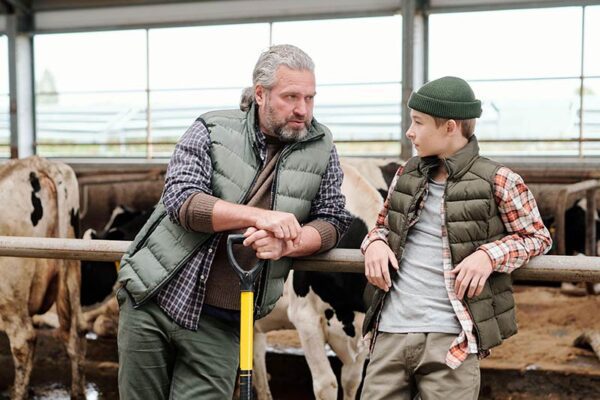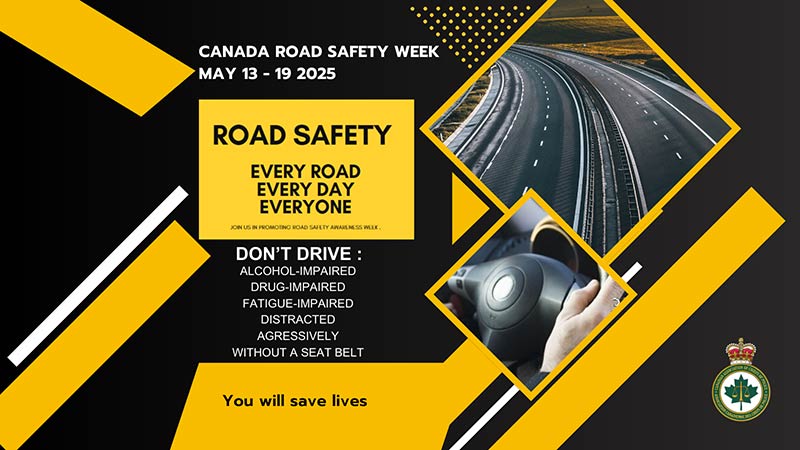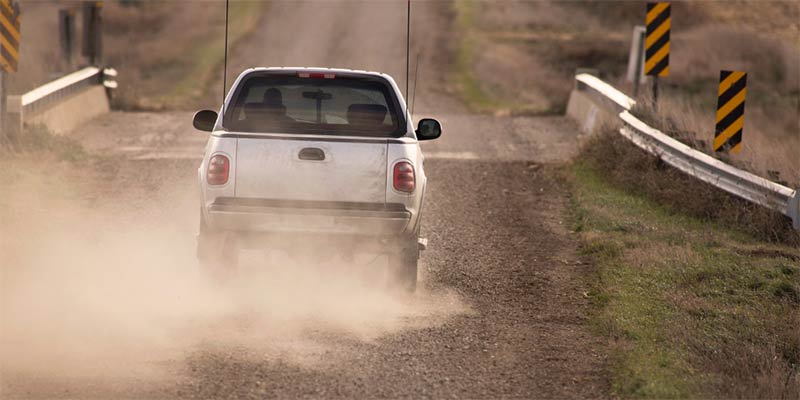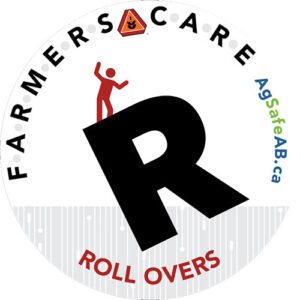
IN THIS ISSUE

Understanding Charges Under the OHS Act Based on One Farm’s Experience
Important: To date, this farm has only been charged (charges were laid on Sept. 28, 2024). The case has not yet gone to court, so please refrain from making any judgments. The information provided is for general awareness and should not be interpreted as legal advice or a final verdict.
Description: In 2023, a farm worker was fatally injured while dumping gravel on an approach to a field. The end dump semi-trailer contacted an overhead power line. The worker was standing outside the vehicle, operating the controls when the dump box contacted an overhead power line.
Charges Laid Under the Occupational Health and Safety (OHS) Act:
- Section 3(1)(a)(i) of the OHS Act, failure to ensure the health and safety of a worker engaged in the work of that employer who was electrocuted while operating an end dump trailer box near an overhead power line.
- Section 3(1)(a)(i) of the OHS Act, failure to ensure the health and safety of their worker by failing to establish, implement and enforce a safe work procedure for operating equipment near an overhead power line.
- Section 3(1)(a)(i) of the OHS Act, failure to ensure the health and safety of their worker by failing to ensure the worker maintained a safe distance between an end dump trailer box and an overhead power line.
- Section 3(1)(a)(i) of the OHS Act, failure to ensure the health and safety of their worker by failing to provide the worker with a spotter while the worker was raising an end dump trailer box near an overhead power line.
- Section 3(1)(a)(i) of the OHS Act, failure to ensure the health and safety of their worker by failing to ensure the worker followed the operator’s manual for the end dump trailer, in which an operator must ensure that overhead clearance is adequate before hoisting an end dump trailer box.
- Section 3(1)(a)(i) of the OHS Act, failure to ensure the health and safety of their worker by failing to ensure the worker complied with section 4(1)(c)(iii) of the Commercial Vehicle Dimension and Weight Regulation.
- Section 3(1)(a)(i) of the OHS Act, failure to ensure the health and safety of their worker by failing to comply with section 4(1)(c)(iii) of the Commercial Vehicle Dimension and Weight Regulation.
Key Takeaways:
- Charges are regularly laid under the Alberta OHS Act in all industries. The fact that most of the OHS Code does not directly apply to farms and ranches at this time means very little in terms of not being charged.
- Employers must ensure the health and safety of workers on the site, as far as is reasonably practicable.
- Having a farm-specific, thoughtful, and well-communicated health and safety program for your operation will help ensure that basic measures (such as those mentioned in bold above) are in place and being followed. This, in turn, help prevent incidents like this from occurring on your farm.
What You Can Do:
- If you have not already, download and become familiar with the Alberta FarmSafe Plan Manual.
- The free, online AgSafe Alberta FarmSafe Plan Learning Program will help you understand what you need to know to create a farm-specific health and safety program. Additionally, it will guide you through the process of creating one.
- Contact AgSafe Alberta with your farm safety questions by emailing us at info@agsafeab.ca.
- Request an advisor visit HERE. Qualifying farms can receive up to 10 hours of free advisor support.

Kids FarmSafe Week
Kids FarmSafe Week takes place from May 12 to 18, 2025.
Balancing work and family obligations can be challenging, especially during busy times. While there is no substitute for good, watchful supervision, another thing that can help protect children is the creation of a safe play area.
Many farms already have an outdoor play area, but they have likely not been designed for safety or checked for potential hazards. When we talk about planning for safety, we are not talking about bubble-wrapping children and preventing bumps and bruises; what we are talking about is ensuring that a child doesn’t get strangled by their clothing on a slide, have a heavy play structure tip over onto them, or be able to run in front of a full grain truck that will not be able to stop fast enough.
Review the National Children’s Centre for Rural and Agricultural Health and Safety’s publication Creating Safe Play Areas on Farms to learn what to think about and what you can do.

Children’s Safety on the Farm:
Safety Starts With YOU!
As we reflect on children’s safety, one of the most important things to remember is that they learn by watching YOU and they will grow up to do the things you do (not necessarily what you tell them).
Think about how you work, and ask yourself: Am I setting my children up for success or failure… a long, healthy life or a serious injury (or even an early death) on the farm?
The numbers don’t lie. Year after year, the vast majority of people fatally injured on farms are owner/operators…(also known as mom & dad). If you have not already, start seriously thinking about the work you do and how you can do it more safely. Check out these resources below to get started:
- Learn farm safety fundamentals through the free, online, self-paced FARMERS CARE Program.
- Go deeper in farm safety using the Alberta FarmSafe Manual and by taking the free, online, self-paced FarmSafe Plan Learning Program.

If you have farm-specific health and safety questions or require support relating to health and safety on your farm, please contact AgSafe Alberta at info@agsafeab.ca.
You may be eligible for onsite farm visits and up to 10 hours of advisor support at no cost!

Canada Road Safety Week
Canada Road Safety Week takes place from May 13 to 19, 2025, with the goal of saving lives and reducing injuries on Canada’s roads. This year’s theme is “Every Road. Every Day. Everyone.”
Canada Road Safety Week is an enforcement-driven initiative designed to increase public compliance with safe driving measures in order to save lives and reduce injuries on our roads. The campaign is focused on risks, such as:
- Drug-impaired driving
- Alcohol-impaired driving
- Fatigue-impaired driving
- Distracted driving (that includes not playing with the radio, temperature settings, mirrors, etc., those things you should setting and adjusting prior to taking it out of park)
- Aggressive driving
- Driving without a seatbelt
Defensive Driving Reminders

AgSafe Alberta knows it is a busy time for farmers and ranchers across the province, especially when it comes to moving equipment on the roads. Safe driving behaviours and practices should always be used. Before hitting the road this season, take a few moments to ensure your time on the road will be as safe as possible and review these defensive driving tips:
- No matter what you are driving, stay present! Staying present means not being distracted or mentally absent (e.g., daydreaming).
- Sit up straight (don’t slouch) and keep both hands on the steering wheel. Why does sitting up straight matter? Here are some reasons:
- It reduces back pain, aches and abnormal joint wear, especially if you drive a lot.
- It can help minimize injury in the event of an accident.
- Sitting up straight improves circulation and improves alertness!
- Stay aware and scan your surroundings; this includes road conditions, other vehicles, and potential hazards ahead of you or in the ditch.
- Stay a safe distance away from other vehicles,(this space can be quite large depending on the conditions).
- Don’t drive in the blind spot of other vehicles. Get ahead of them or get behind them safely – bad things can happen if you stay in their blind spot.
- Keep your distance from bad drivers. If someone is having trouble staying in their lane, is tailgating, driving too fast or even driving too slowly, you will want to safely create distance between you and them.
- Use your signal light. Signal lights tell other drivers (and pedestrians) what you are going to do. This means that you should be turning your signal on about 100 feet in advance of your turn.
- Don’t engage in “road rage.” Stay calm, resist the urge to retaliate and if someone starts following you, calmly drive to the nearest police station if possible. If necessary, have someone in the vehicle call 9-1-1.
Congratulations to Our $100 UFA Gift Card Winners!

We would like to thank everyone who completed one of our online courses and/or any level of the FARMERS CARE program. Applying just a little bit of what you have learned can make your farm a safer place.
We would also like to congratulate our five $100 UFA gift card winners!
Jake R.
Deacin L.
Ken G.
Sam K.
Andy B.
Using the UV Index

Are you familiar with the UV index? Do you use it when planning work outdoors? If not, this simple and handy tool can help you identify appropriate precautions to take when working or playing outdoors.
The premise is simple: the higher the UV Index, the more protective measures that need to be taken.

Source: Government of Canada
Click here to download and print AgSafe Alberta’s Using the UV Index Scale Toolbox Talk.
Click here to download and print AgSafe Alberta’s Sun Safety Tips Toolbox Talk.
Click here to download and print Great Plains Center for Agricultural Health’s Skin Cancer and You Bulletin
Tractor Rollover Review

As farm equipment across the province is moving, take the time to quickly review safe operation with your family and farm workers.
According to the Canadian Centre for Occupational Health and Safety, 85% of all tractor rollovers are sideways rollovers. Canadian Agricultural Injury Reporting (CAIR Reports) shows that the top five immediate causes of rollovers are:
- Travelling too close to an edge (36%)
- Travelling on an incline (28%)
- Cornering (6%)
- Rough terrain (6%)
- Towing (extraction) (4%)
Tractor rollover resources:
CONTACT US
